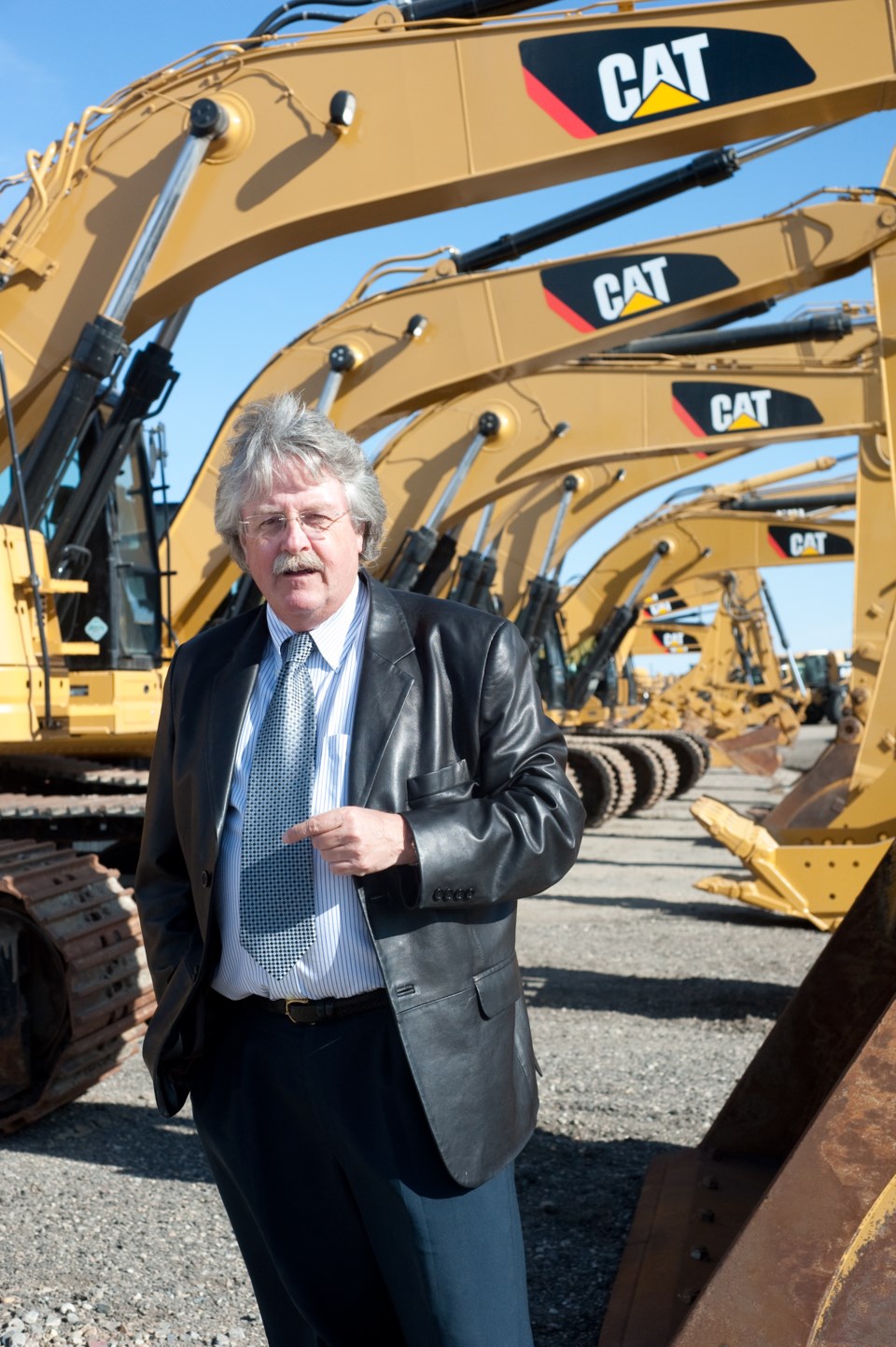I was quite distraught to hear that Kramer Ltd., Saskatchewan’s Caterpillar dealer for 70 years, is С����Ƶ sold to Finning. While Finning is the largest Cat dealer in the world, it is so big it’s unrealistic to expect the same sort of personal touch Saskatchewan has known all our lives with the Kramer family.
From the perspective of Pipeline News, whenever I called them up, asking to do a story, I was rarely disappointed. Several times I sat down with Kramer president Tim Kramer and talked about the business, pipelining, and whatever was our focus for the month. But my history with Tim Kramer goes back much, much further than that.
It seems everyone had a Kramer Ltd. story. Here’s mine:
In 1997, I flunked out of the mechanical engineering program at the University of Saskatchewan after several years of floundering studies. My step-dad, Brad Stroud, had gotten me into unionized pipeline construction as a summer job. It soon became my primary line of work. But there was a problem.
I realized that there is little incentive for experienced operators to teach younger people, like myself, how to operate equipment proficiently. Each person they trained was another person in direct competition for the limited jobs available.
So sitting at Louis’ Bar at the U of S campus (drinking Diet Coke) and talking to some friends, I cooked up the idea of a virtual reality training simulator to teach people how to operate heavy equipment. Specifically, we would target excavators, also known as trackhoes, because they were one of the most useful pieces of heavy equipment and a growth area. I convinced my best friend, Jason Coutu, to be my partner and do the programming part, while I focused on design, concepts and corporate work.
We were able to secure a few thousand dollars of federal research and development money, and with that and whatever meager dollars we had between us, we built a proof-of-concept prototype.
The prototype consisted of a full, to-scale mockup of a Caterpillar 322 excavator cab. The authentic chair alone cost $6,000. Instead of hydraulic controllers, we used computer joysticks. Since 40-inch flat screens were around $20,000 a piece at the time, we opted for a very early virtual reality headset. By modifying an existing computer game, we were able to show how you could use its 3D graphics, virtual reality projection, and this cab mockup to dig a small hole in cyberspace.
We then took it to Regina to show Tim Kramer. He grabbed his top guy in Regina, and the two of them sat in my mobile showroom, my ’82 Ford camper van with the bed taken out. Tim was so impressed he personally made arrangements for us to present this to the head of Caterpillar training at their proving grounds south of Tuscon, Arizona, during the week of the massive ConExpo 1999 trade show, held in Las Vegas.
That’s a pretty important introduction for two college dropouts with no money and nothing but a startup idea, back before startups became sexy.
The head of Caterpillar training tried it out for ten minutes. He told us, “Great idea, huge market, we won’t give you money.”
After several more years of trying and failing to raise funds, the project eventually died. Jason went back to school, got his bachelors, then masters degree in computer science. I continued pipelining for a while, then in 2003, switched back into newspapers full time.
The virtual reality simulator for excavators was too good of an idea to not be developed by someone. We had grossly underestimated how much it would cost do develop, and we were an utter failure in raising capital. We were simply too far ahead of our time, technology-wise. It was more than a decade later when you started seeing simulators similar in design to what we had conceived. The difference is these simulators use now-inexpensive large screens. Virtual reality headsets, like the much-ballyhooed Oculus Rift still have not caught on, 16 years later.
But if you want to see what we had conceived, go to www.catsimulators.com. Cat Simulators is the company that eventually did secure Caterpillar’s cooperation and brought the concept to fruition.�� About 90 per cent of what you see there, I have notes for in my logbooks from 17 years ago.
So what does this have to do with Tim Kramer? He took and interest, and a chance, on us. He could have easily dismissed us, like so many others did. But he didn’t. He made that connection and opened the door for us in a way no one else did. And for that, I will be forever grateful.
I hope he enjoys his retirement.
��
Brian Zinchuk is editor of Pipeline News. He can be reached at [email protected].




